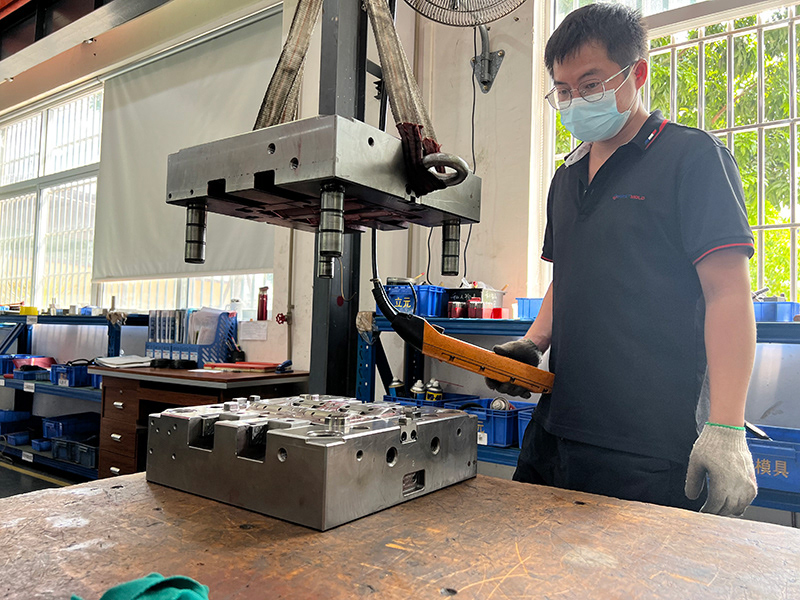Enhancing the Lifespan of Injection Molds: A Comprehensive Guide
Injection molds are crucial in shaping the profitability of injection molding projects. Extending their lifespan beyond the designed expectancy can significantly boost a company's profitability. This article explores seven effective strategies to enhance the lifespan of injection molds.

1. Proper Setting of Clamping Force
Setting the correct clamping force on the injection molding machine is vital. Both excessive and insufficient clamping force can adversely affect the mold's lifespan. Insufficient force may lead to the mold opening during injection, causing damage, while excessive force can exert undue pressure on the mold's parting line, exhaust area, and components, leading to wear and damage.
To avoid these issues, use mold flow analysis or calculate the ideal clamping force for each mold using the formula:
Clamping Force = Projected Area x Material Clamping Force Factor x Safety Factor
The projected area includes the product and the runner system. The material clamping force factor can be obtained from material property charts or by consulting material suppliers. The safety factor, generally between 1.5 and 2, depends on factors like the stability of the injection machine and the mold structure.
2. Low-Pressure Mold Protection
Setting low-pressure mold protection on the injection machine safeguards the mold. Set the high-pressure lock position no higher than 0.05 inches above the actual mold contact position. Gradually reduce the low-pressure mold protection pressure until the mold no longer locks.
This approach allows the clamping pressure to rise slowly, transitioning smoothly from low to high-pressure mold protection. Additionally, set the mold closing timer to 0.5 seconds longer than the actual mold closing time. For instance, if the actual closing time is 0.6 seconds, set the timer to 1.5 seconds.
3. Optimal Mold Opening and Closing Settings
The speed of mold opening and closing affects cycle time, but faster isn't always better. Excessively fast speeds can cause undue wear or damage to mold components.
Ensure a smooth transition from fast to slow mold closing, with the slow phase occurring before pins and components align. Similarly, ensure a smooth transition between fast and slow mold opening, with fast opening occurring after all products and components have detached from the mold.
4. Proper Ejector Pin Settings
Incorrect ejector pin settings can jeopardize mold life by causing over-ejection or improper product release, leading to press-fit issues and mold damage. Set the ejection amount correctly based on the required product separation from the mold. Excessive ejection amounts can overburden the ejector pins. Along with ejection amount, the ejection pressure should also be set appropriately, based on the specific product requirements.
5. Appropriate Hot Runner Settings
The method of starting and shutting down hot runners affects mold life. Improper startup can cause mold swelling, necessitating disassembly and repair. Before production, manually operate valve gates to verify correct settings and functionality.
Expel material from the hot runner onto a tray and measure its temperature to ensure it meets requirements. During hot runner shutdown, immediately lower the temperature to reduce the risk of material degradation.
6. Proper Mold Cooling Settings
Excessively high mold temperatures can negatively impact mold life. Limiting mold temperature to the minimum required for acceptable part appearance is an effective way to extend mold life.
Additionally, ensure the temperature difference between the moving and fixed sides of the mold does not exceed 6 degrees Celsius. Higher temperature differences can cause significant thermal deformation between the two sides, leading to issues with mold opening and closing, resulting in wear or damage.
7. Mold Cleaning and Maintenance
Inspect, clean, and lubricate molds in the production environment at least once per shift. Look for signs of wear, such as scratches, parting line wear, burrs, and metal shavings.

Establish a regular preventive maintenance schedule, keep records of mold repairs, and review repetitive repair events to determine preventive maintenance frequency. This approach helps reduce unplanned maintenance events.
By following these pathways, the lifespan of injection molds can be significantly enhanced, contributing to the overall efficiency and profitability of injection molding projects.
